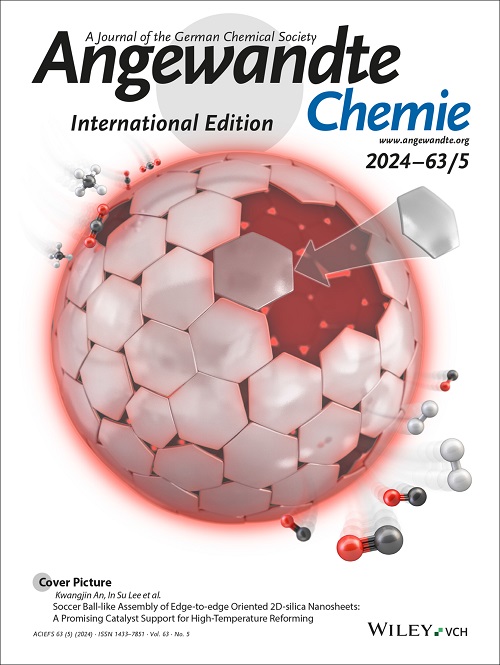Monofluorinated Phosphate with Unique P-F Bond for Nonflammable and Long-Life Lithium-Ion Batteries
IF 16.1
1区 化学
Q1 CHEMISTRY, MULTIDISCIPLINARY
引用次数: 0
Abstract
Lithium-ion batteries (LIBs) with conventional carbonate-based electrolytes suffer from safety concerns in large-scale applications. Phosphates feature high flame retardancy but are incompatible with graphite anode due to their inability to form a passivated solid electrolyte interphase (SEI). Herein, we report a monofluorinated co-solvent, diethyl fluoridophosphate (DEFP), featuring a unique P-F bond that allows a trade-off between safety and electrochemical performance in LIBs. The P-F bond in DEFP weakens ion-dipole interactions with Li+ ions, lowering the desolvation barrier, and simultaneously reduces the lowest unoccupied molecular orbital (LUMO) of DEFP, promoting the formation of a robust and inorganic-rich SEI. Additionally, DEFP exhibits improved thermal stability due to both robust SEI and the inherent flame-retardant properties of the P-F bond. Consequently, the optimized DEFP-based electrolyte exhibits improved cyclability and rate capacity in LiNi0.8Co0.1Mn0.1O2 || graphite full cells compared with triethyl phosphate-based electrolytes and commercial carbonate electrolytes. Even at a low E/C ratio of 3.45 g Ah-1, the 1.16 Ah NCM811||Gr pouch cells achieve a high capacity retention of 94.2% after 200 cycles. This work provides a promising approach to decouple phosphate safety and graphite compatibility, paving the way for safer and high-performance lithium-ion batteries.具有独特 P-F 键的单氟磷酸盐,可制成不易燃、长寿命的锂离子电池
采用传统碳酸盐电解质的锂离子电池(LIB)在大规模应用中存在安全问题。磷酸盐具有高阻燃性,但由于无法形成钝化的固体电解质相(SEI),因此与石墨负极不兼容。在此,我们报告了一种单氟助溶剂--氟磷酸二乙酯(DEFP),它具有独特的 P-F 键,可以在 LIB 的安全性和电化学性能之间进行权衡。DEFP 中的 P-F 键减弱了与 Li+ 离子之间的离子-偶极子相互作用,降低了脱溶障碍,同时降低了 DEFP 的最低未占分子轨道 (LUMO),促进了坚固且富含无机物的 SEI 的形成。此外,DEFP 还具有更强的 SEI 和 P-F 键固有的阻燃性能,因而具有更好的热稳定性。因此,与基于磷酸三乙酯的电解质和商业碳酸盐电解质相比,优化的基于 DEFP 的电解质在 LiNi0.8Co0.1Mn0.1O2 ||| 石墨全电池中表现出更高的循环性和速率容量。即使在 3.45 g Ah-1 的低 E/C 比条件下,1.16 Ah 的 NCM811||Gr 袋式电池在 200 次循环后也能达到 94.2% 的高容量保持率。这项工作为磷酸盐安全性和石墨兼容性的解耦提供了一种前景广阔的方法,为更安全、更高性能的锂离子电池铺平了道路。
本文章由计算机程序翻译,如有差异,请以英文原文为准。
求助全文
约1分钟内获得全文
求助全文
来源期刊
CiteScore
26.60
自引率
6.60%
发文量
3549
审稿时长
1.5 months
期刊介绍:
Angewandte Chemie, a journal of the German Chemical Society (GDCh), maintains a leading position among scholarly journals in general chemistry with an impressive Impact Factor of 16.6 (2022 Journal Citation Reports, Clarivate, 2023). Published weekly in a reader-friendly format, it features new articles almost every day. Established in 1887, Angewandte Chemie is a prominent chemistry journal, offering a dynamic blend of Review-type articles, Highlights, Communications, and Research Articles on a weekly basis, making it unique in the field.

 求助内容:
求助内容: 应助结果提醒方式:
应助结果提醒方式:


